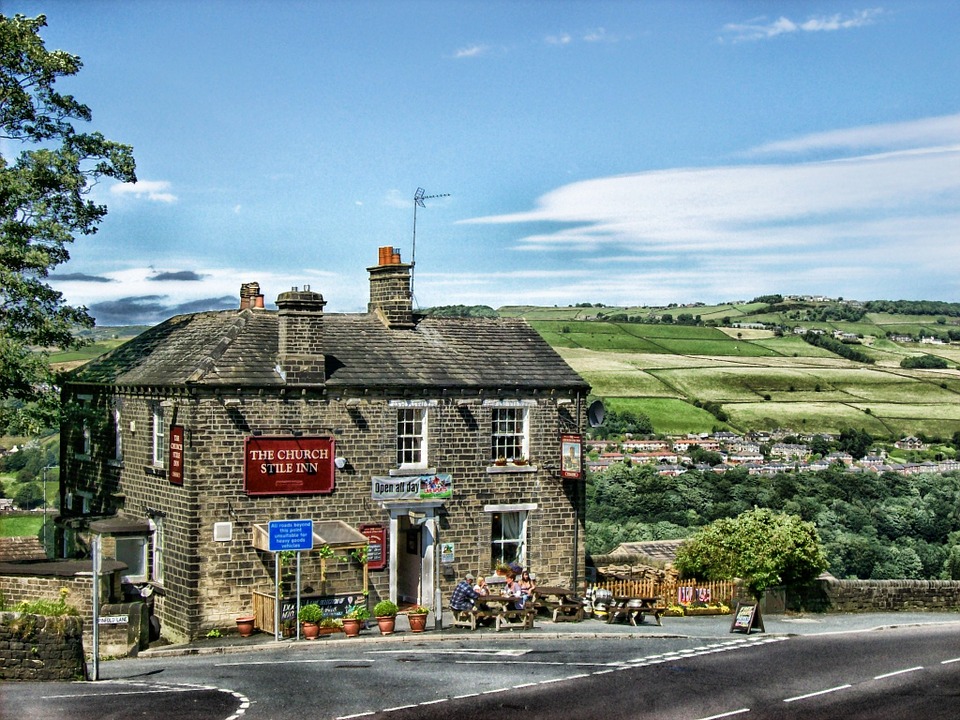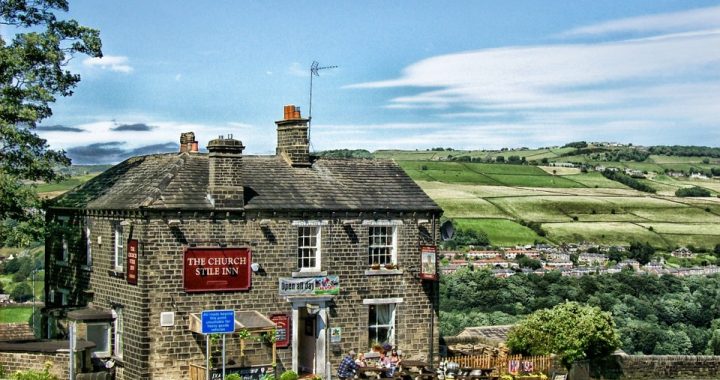Top 10 Mysteries Set in the British Countryside
The British countryside is such a peaceful, bucolic place. Who on earth would want to kill anyone there? Yet we’ve been doing it for years. From Wuthering Heights onward, the landscape has become one of the biggest, baddest characters in British fiction, and crime fiction especially.
1) The Hound of the Baskervilles by Sir Arthur Conan Doyle. Originally published in Strand Magazine, as it happens. I was born not far from Dartmoor, on which Conan Doyle’s masterpiece is set, in the southwest of England where the land juts toward the Atlantic. Just as in the book, it’s a place where sudden impenetrable mists can fall, and on which a grim granite prison stands, though Princetown Gaol no longer houses murderers like Selden, whose escape is at the heart of Doyle’s plot. It’s one of those books that cements in readers’ minds the vision of England as a dank, damp, melancholy place.
2) To the north of Dartmoor is another smaller piece of moorland, Exmoor. Belinda Bauer has set three books here starting with her extraordinary, witty, and inventive debut, Blacklands. For British writers of our age, moorland has an even more real darkness than Conan Doyle’s. If you grew up in ’60s Britain, you would have been aware of the real-life Moors Murders, when five children were abducted by serial killers Ian Brady and Myra Hindley and their bodies buried on Saddleworth Moor, outside Manchester. Blacklands absorbs elements from the real story to build the tale of a boy digging the moor to try and recover the body of a murdered uncle, exploring the darkness and damage left long after such a cataclysmic event.
3) Move even further west and you get to Cornwall, the territory where Rebecca by Daphne du Maurier is set. Opening with the famous lines “Last night I dreamed I went to Manderley again,” Rebecca is the original domestic noir novel. It is set near Fowey in Cornwall, even further west than Dartmoor, on the wild coast where the first Mrs. de Winter died in an apparent boating accident. English country houses are never as beautiful as they first seem, always carrying dark history in their creaky floorboards.
 4) At the heart of the north of England, there are old villages tucked in valleys. In A Place of Execution by Val McDermid, a journalist comes to a small, rural Derbyshire village to write the story of a 40-year-old assault and murder of a 13-year-old girl whose body was never found and uncovers shocking truths about the original investigation. Again, with nods to the Moors Murders, what’s great about A Place of Execution is that it’s not just the Derbyshire landscape that proves hostile but the locals whose characters have been formed by it. A remarkable book.
4) At the heart of the north of England, there are old villages tucked in valleys. In A Place of Execution by Val McDermid, a journalist comes to a small, rural Derbyshire village to write the story of a 40-year-old assault and murder of a 13-year-old girl whose body was never found and uncovers shocking truths about the original investigation. Again, with nods to the Moors Murders, what’s great about A Place of Execution is that it’s not just the Derbyshire landscape that proves hostile but the locals whose characters have been formed by it. A remarkable book.
5) Peter Robinson sets his Inspector Banks series in a similar northern village, this time in Yorkshire. But in In A Dry Season, he imagines a crime set in a different village and in a different era: the Second World War in a hamlet drowned by the creation of a reservoir. And the crime only comes to light in a scorched summer when the reservoir starts to run dry and secrets start to emerge. The tenth in the Banks series, this is the one where everybody sat up and noticed.
6) Robinson’s book has parallels with another great one set in Yorkshire. On Beulah Height in Reginald Hill’s Dalziel and Pascoe series also features a series of child murders concealed by a drowned village. Hill was a brilliant writer. It’s a crisp police procedural with a great sense of place and a hint of the supernatural in it; I would love to know what Americans make of Yorkshire dialect in which Hill’s characters often speak.
7) Norfolk lies on England’s east coast, a huge, flat land that fights a constant battle for survival with the North Sea. Elly Griffiths set The Crossing Places, the first in her wonderful Ruth Galloway series, there. Galloway is an archeologist, which gives these books a privileged insight into the British landscape and its ancient history. When bones are discovered on a beach, they turn out to be Iron Age remains, but their discovery draws the young academic into the orbit of the police when a second, much less ancient set of bones is discovered.
8) The further north you go, the more interesting it becomes. Scotland punches way above its weight as both source and setting when it comes to British crime fiction. In Standing In Another Man’s Grave, Ian Rankin forces Rebus out of the comfort of Edinburgh for a kind of road movie crime novel, as they explore a series of murders that happened along a section of road that passes through the Scottish Highlands, a landscape perfectly evoked in Rankin’s glorious but deeply unromantic prose. (Hat tip to crime writer Ed James for suggesting I include this one.)
9) Quiet and underpopulated, Scottish islands suffer few murders in real life. The Shetlands, however, have suffered more than a few fictional deaths since Ann Cleeves began setting novels there. Raven Black is a slow but brilliant mystery that uses the setting wonderfully. But it also explores the dark side of isolated communities: how they conspire against both outsiders and their own youngsters who dream of bigger worlds.
10) Finally, another island story. Peter May’s The Black House struggled to find a publisher because of its unconventional story-within-a-story structure; at times it doesn’t feel like a crime novel at all. Set on the Hebridean island of Lewis, it deals with two seemingly unconnected murders but also with detective Fin Macleod’s own childhood on the island and his own unfinished business in the tiny community’s male rite of passage, which involved going on the annual gannet hunt to the tiny rocky outcrop of An Sgeir.
William Shaw’s latest novel, The Birdwatcher, is set in Kent, in the south of England on the isolated stony promontory of Dungeness.

